#folk tale
Text

The Sultan orders to cut off Aladdin's head by Albert Robida
#aladdin#scimitar#art#albert robida#illustration#aladdin and the wonderful lamp#one thousand and one nights#1001 nights#arabian nights#folklore#folk tales#fairy tales#chains#sword#oriental#middle eastern#executioner#swords#folk tale#hanna diyab#china#chinese#the book of the one thousand and one nights#the arabian nights#antoine galland#mythology#asia#asian#sultan
45 notes
·
View notes
Photo


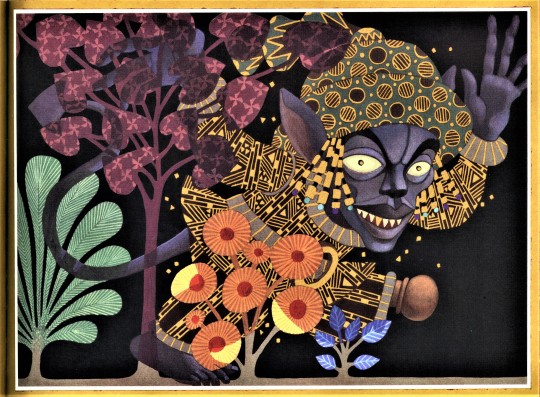

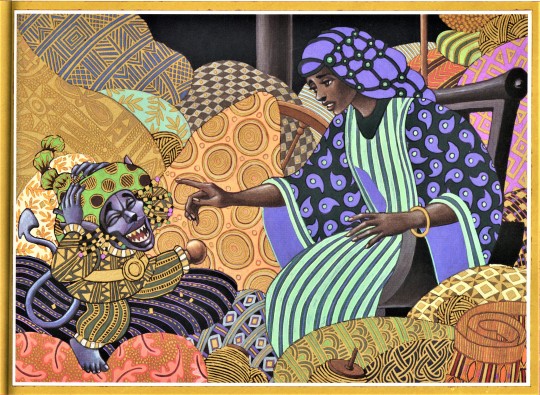


Staff Pick of the Week
My name is Elizabeth Voorhorst, and I am a new writing intern for Special Collections this semester. It is a pleasure to share this space, as I am excited to delve into the vast sea of books that Special Collections makes a home for.
I am an English major, with a focus on creative writing. Because of this, my time spent in Special Collections will be focused predominantly on fairy tales and folklore, perhaps dipping into mythology when curiosity and inspiration strikes hardest.
For this week, I wanted to focus on black creators and their works for Black History Month. Because my pride and passion is folklore and fairy tales, I thought it would be fun to take a look at what we have in our collection and share it with you!
Retellings are always enjoyable, as you get to see the way writers recreate and offer their own flare and heritage to the story. One such story is The Girl Who Spun Gold, a retelling of the German classic fairy tale Rumpelstiltskin. This retelling was written by Virginia Hamilton (1932-2002) and illustrated by Leo Dillon (1933-2012) and Diane Dillon (1933- ).The book was published 1n 2000 by Blue Sky Press, an imprint of Scholastic Inc.
The story is about a West Indian girl named Quashiba, whose mother lies to Big King that she is able to spin golden thread. The King takes Quashiba as his queen, expecting her to fill whole rooms with golden fabrics and finery, which of course she would be unable to do. However, she meets a creature who offers to help, but demands that in three days she must guess his name correctly or be bound to him forever.
Quashiba is now able to fulfill the King’s continuous demands, but is unable to guess the name of her helper, until the King reveals to her that he ran across a strange creature in the woods who was dancing and singing a song that included his name, Lit’mahn Bittyun. So, on the final night, after the room is filled with fabrics and wondrous goods, Quashiba plays dumb for the first two guesses, and on the last guess she gives him his full name and he explodes into a confetti of golden specks. The King repents his greed, but only after three years and a day does Quashiba reconcile with him.
The absolutely stunning illustrations for The Girl Who Spun Gold were made using a four-color process with gold as a fifth color. The Dillons comment on the painting process, stating:
Knowing the difficulty of painting with metallic paint as well as the difficulty of reproducing gold, we still chose to use it, for the story itself revolved around the concept of gold. The art was done with acrylic paint on acetate, over-painted with gold paint. The gold borders were created using gold leaf.
The book was printed on one-hundred-pound Nymolla Matte paper, and each illustration was spot-varnished. Color separations were made by Digicon Imaging Inc., Buffalo, New York, and the book was printed and bound by Tien Wah Press, Singapore, with production supervision by Angela Biola and Alison Forner. Along with Leo & Diane Dillon, the book was also designed with help from Kathleen Westray.
View more work by African American artists.
View more posts concerning African Americans.
View more Staff Picks.
- Elizabeth V., Special Collections Undergraduate Writing Intern
#Staff Pick of the Week#black history month#virginia hamilton#fairy tales#Leo Dillon#Diane Dillon#the girl who spun gold#rumplestiltskin#folk tale#black writers#African American writers#African American artists#scholastic#black artists#Blue Sky Press#children's books#Historical Curriculum Collection#illustrated books#Elizabeth V.
216 notes
·
View notes
Text

Been working on this personal art piece! It's working title is 'The Oldest Story' and is the Lore/Origin story for a novel idea I've been workshopping. On its own though, I think it looks pretty good!
Bonus Shots:

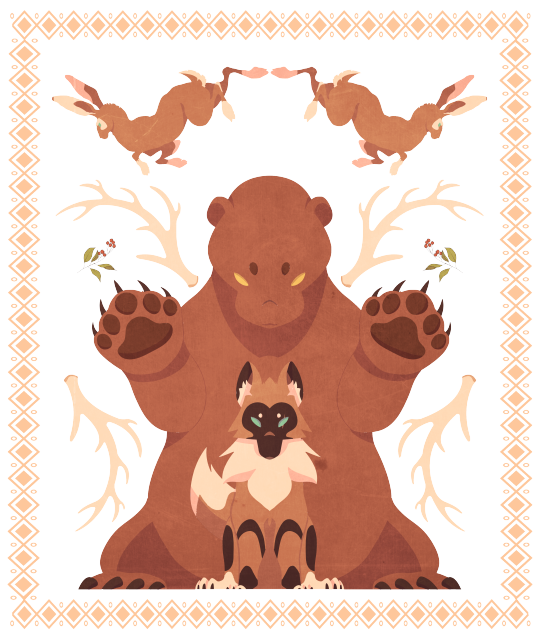
340 notes
·
View notes
Photo

Day 20 -- folk tale
Of all the strange fables told to children in the Fallows, Thumblorse may be among the most nonsensical.
212 notes
·
View notes
Text
There is a folk tale in Paldea about the half moon tourney. Legend says that in June, when the moon is half full, bisharp from all over Paldea gather in the bamboo forest and challenge each other to see who is the strongest. As the tourney progresses, the stronger bisharp evolve into kingambit. The last one standing is the strongest kingambit in all the land.
This story has given rise to the traditional saying: Bisharp on the move, summer will arrive in June
90 notes
·
View notes
Text
The Origins of Selene's Name
Ok, so here's something completely different. This isn't necessarily a worldbuilding post or a specific story, so much as it is an explanation as to where Selene got her name. Thanks absolutely must go to @druidx for helping me with the folk tale at the end of this little explanation.
Tags: @druidx, @sparrow-orion-writes, @ashirisu, @blind-the-winds, @philosophika, @the-down-upside-finch
OK, so, I wrote about Selene's birth family a long while back and realised that Sel's name does not fit the naming conventions of the rest of her family. Of course I came up with Selene years before this part of her backstory, but I wanted to explore a more in-universe explanation.
Selene was born in the equivalent of early January, on the night of a full moon on a crisp and clear night. Her mother, Rosalie, recalled a word her grandmother had used to refer to the kind of moon present in the sky that night, and decided it would make for a suitable name for her newly born daughter should she survive the 4-5 months until her Name Day.
Selene, when she was a little girl, did ask her mother where the name came from, and Rosalie explained that her grandmother had said the name at one point and made mention of an old fairy-tale passed down through the generations that had been mostly forgotten. While the full story was no longer remembered, parts of it were, and Selene was told it was to do with the moon, mid-winter and this name.
Skip forward a few more years, and Selene is talking with Yastromo after her arrival at his tower near the Darkwood. Yastromo notes how unusual Selene's name is in comparison to the rest of her family, and Selene tells him what her mother had told her. Yastromo, as much older and very learned man, realised that the fairy-tale passed down through Selene's family, was the same as an old folk tale from a tribe of nomads that had once lived in the area that the little town of Toreguarde now occupied. While the old wizard could not be certain that Selene's family had any connection to this nomadic tribe, he did decide to regale Selene with the full tale, which has been transcribed for your pleasure below:
A long time ago there was a fair young girl with skin as white as freshly fallen snow and hair as silver as the stars. She lived a simple life with her mother and father in a little house on the edge of the forest. One harsh winter night, the girl's mother got sick and the wise man of the nearby camp told her father that the only thing that would cure her was the heart of a pure white rabbit. The girl's father asked the girl if she would go out and look for this rabbit so he could cut out its heart to cure her mother. So, off the girl goes into the woods in search of a pure white rabbit.
The girl spends a whole day searching the woods, but does not find a pure white rabbit. When the sun sank below the ground to go to sleep, the girl started to get very tired and hungry and curled up underneath a tree to rest.
When she awoke, the night was lit by the soft, silver light of a full moon, and sitting at her feet, cleaning it's little pink nose, was a rabbit with fur of purest white. The girl slowly brought out her knife from her boot, knowing that the only way to save her mother was to kill the creature. But a pang of pity stayed her hand at the last moment. The rabbit looked up, twitched it's nose at her. The girl started to cry, for she loved her mother and did not wish her to die. But neither did she want to kill an animal so innocent and pure. The rabbit sat up and smiled at her,
"Little girl, why do you cry so?" it asked. The girl explained her predicament, that she needed the heart of the rabbit to save her ailing mother, but that she did not want the rabbit to die either. The rabbit cocked its head to one side and looked up at the moon. So full and bright was it that it reflected perfectly in the rabbit's eyes.
"You are a good and gentle child. If you promise to return home and never again return to this forest, then I shall speak with Selune to see that your mother's life is spared." it said. The girl looked at the rabbit in confusion,
"Selune?" she asked. The rabbit nodded, it's ears flopping.
"Yes, my mother. She lives upon the moon, you see, and watches all of Titan's children through the night." the rabbit explained. The girl thought for a moment, then nodded,
"I promise never to return to your forest and disturb your rest, so long as my mother survives this sickness." she agreed. The rabbit thumped its foot upon the biggest root of the tree, then turned tail and hopped away.
When the girl returned home without the rabbit, her father was furious. He took off his belt to beat her, but was stopped when his wife came through the door and asked why he was shouting so. While she was still tired and pale, the mother was in no danger of passing that night. The girl hugged her mother, then ran to the window and smiled up at the moon that gleamed in the night sky. She then told her mother and father of the promises she and the white rabbit had exchanged, and never again did the girl or her family ever return to the forest.
When Selene heard the tale, it resonated with her so much that, once she turned 16 years old, she officially began using the surname Frigidwake rather than the one she had been given by her birth family. The idea of promises kept also resonated, hard, and Selene has a personal oath to never break a promise she's made if she can help it at all. It also means that she can take sincere promises made by others extremely seriously, especially if they're made by friends or those she considers family.
#aquadestinyswriting#titan fighting fantasy#selene frigidwake#tales of the librarian#folk tale#writing meta
7 notes
·
View notes
Text

Folktale Week 2023 - Lost
This piece, like all the others, is a late submission, but for Lost, I decided to depict a part from the Polish fairy tale The Bear in the Forest Hut. Essentially, this maiden had just been abandoned to a dark and expansive forest thanks to her envious and cruel stepmother and her lazy and entitled stepsister, who twisted her father's arm into making her wander the world alone with just some bread. Little would she know that her fortune would turn around soon in this tale that is part Mother Hölle, part Beauty and the Beast.
#dkayproductions#dkayproductions art#art#folktale week#folklore#folk tales#folk tale#lost#dkayproductionsart#thebearintheforesthut#bearintheforesthut#strawberries#strawberry#illustration#folktale#fairytale#fairytales#fairy tale#fairy tales#folktaleweek2023#folk tale week 2023#folktale week 2023#polish#poland#polish folklore#polish folktales#strawberry plant
11 notes
·
View notes
Text
The Lovers’ Journey of Bill & Frank: A Folktale Analysis

Based on Dr. Clarissa Pinkola Estés’ Women Who Run With the Wolves; Adapted from my Twitter thread
"Wise stories... describe love as a union of two beings whose strength together enables one or both to enter into communication with the soul-world and to participate in fate as a dance with life and death."
- Chapter 5, Hunting: When the Heart is a Lonely Hunter, Dr. Estés
In her retelling of The Skeleton Woman, Dr. Estés describes the titular character as the third party in any romance, Lady Death, who represents the Life/Death/Life cycle with which the lovers must be in communion if they hope to have any longevity. She lays out the story's 7 steps to lasting love (though the order may vary):
Accidental Finding of Treasure
Chase and the Hiding
Untangling the Skeleton
Sleep of Trust
Giving the Tear
Heart as Drum, and Singing Up
Dance of Body and Soul
In #TheLastOfUs Episode 3, we see Bill & Frank experience all of these stages together, passing from life to death and back again through their love for one another, and by accepting both life and death, they achieve a love that is eternal.
The story starts with both lovers symbolically dead: Bill is living alone in his compound, effectively locked into his own tomb, and he discovers Frank in the pit he dug; in other words, in a grave. Bill approaches Frank like prey: the heart is a lonely hunter, indeed. Now the Accidental Finding of Treasure: Bill finds Frank in the <grave> and is not aware at first of what he has found. He is fearful of this stranger and wants to cut him loose, just as the story's hunter wants to release the Skeleton Woman when he catches her in his net.
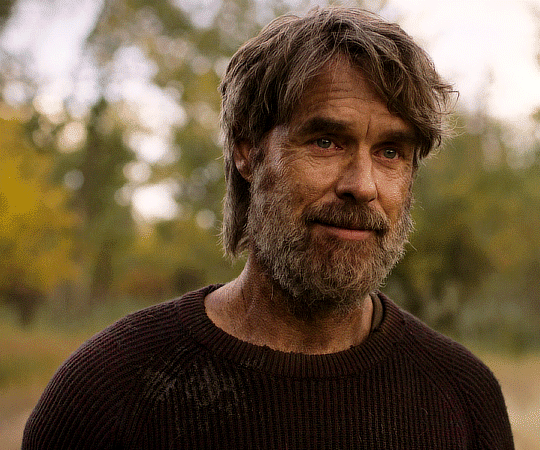
Next, the Chase and the Hiding: Because the hungry Skeleton Woman eats food of the mortal world, I also consider this step to be the sharing of food, which is a common way mythical lovers lay claim to one another. Hungry Frank eats of Bill's food, and thus becomes tied to him. Bill is quite literally followed home by this unexpected sack of bones and he feeds him, yet at the same time, Bill is hiding from Frank (and likely from himself, as it seems Bill has been deeply closeted all his life).
The next stage, Untangling the Skeleton, is performed by both men as they try to tease out who the other is. Frank notices Bill's care with food and wine, as well as his piano, as Bill tries to determine whether Frank can be trusted. They arrange one another's bones in order.
The Sleep of Trust symbolically occurs each time Bill chooses to trust Frank during their first encounter: first when he allows Frank to use his shower, again when he cooks for him, lets him play the piano, and finally when he showers himself, leaving Frank unattended.
Giving the Tear is a more literal stage for these lovers, as they both become visibly emotional when they connect over music. Further, their desperate desire is a type of thirst, just like the thirsty Skeleton Woman who drinks the Hunter's gift of a tear.
The next stage, Heart as Drum and Singing Up, is my favorite and the one most distinct to the Skeleton Woman tale. In the story, she takes the heart from the Hunter's chest and beats it like a drum, singing flesh onto her bones through the soul-song they share. And indeed, Frank correctly identifies the song of Bill's heart, his soul song, and beats the piano like a drum, singing flesh onto Bill's dried-up bones. It's clear when Bill plays that it is the first time he has done so in a... Long, Long Time.
All of this gradual acceptance of Life by two symbolically dead men leads to their eventual consummation, the Dance of Body and Soul. This is why their scene of intimacy is necessary to their story - we MUST see them return from death to life. But of course, their story is not yet over. They have accepted Life, but now they must also accept Death. The Lovers' Journey of their meeting is followed by the longer Lovers' Journey of their lifetimes, and they gradually pass through all the stages again.
Briefly, this second journey goes:
Accidental Finding of Treasure = Frank chooses to stay
Chase and Hiding = Frank making his mark on their home, drawing Bill out of his shell
Untangling the Skeleton = Making friends, growing together
Sleep of Trust = Bill's gunshot wound
Giving the Tear = Acknowledging Frank's inevitable death
Heart as Drum and Singing Up = Marriage (again with the soul song)
Dance of Body and Soul = Passing on together
In the second half of their journey, they accept that they will return to death from life, and embrace it. Finally, after their deaths, Bill passes the lesson he has learned to Joel, telling him that to love is to live. This will inspire Joel to protect Ellie with all that he has, ensuring the cycle of life will continue.

Thank you #TheLastOfUs for this beautiful love story!
#the last of us#the last of us hbo#tlou#tlou show#tlou meta#meta#bill x frank#mlm#joel miller#ellie miller#women who run with the wolves#clarissa pinkola estes#skeleton woman#lady death#life death life cycle#folktale#queer folk tale#folk tale#folktale analysis#tlou analysis#long long time#tlou ep 3#tlou episode 3 spoilers#tlou episode 3#the last of us ep 3#the last of us episode 3#linda ronstadt#soul song
62 notes
·
View notes
Text
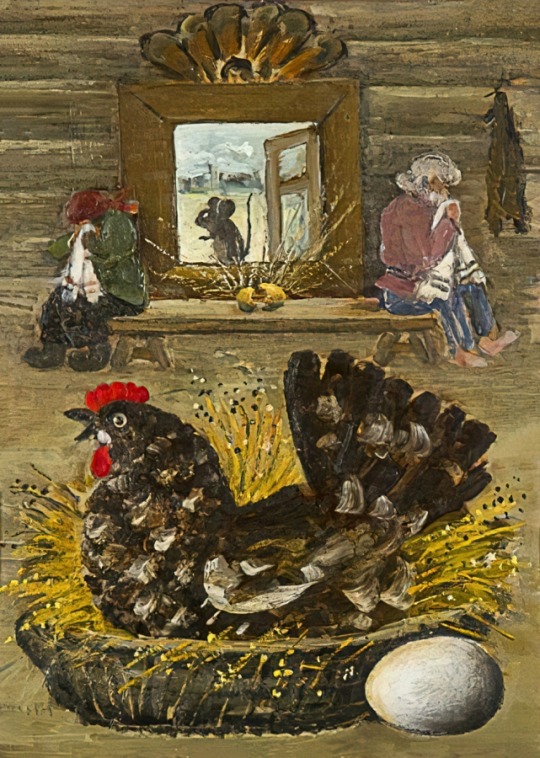
Kurochka Ryaba is an East Slavic folk tale, very popular in Russia. Boris Zakhoder believed that this is a fairy tale about human happiness: “Happiness is a golden egg - people beat it this one way or another, but a mouse ran over, waved its tail and the egg broke.” There is also a version that this is an interpretation of the myth of the creation of the world by the ancestors.
Курочка Ряба - восточнославянская народная сказка, очень популярная в России.Борис Заходер считал, что это сказка о человеческом счастье: «Счастье — это золотое яйцо — люди бьют его и так и эдак, а пробежала мышка, хвостиком махнула и яйцо разбилось».Также есть версия, что это интерпритация мифа о сотворении мира прародителями.
20 notes
·
View notes
Text
Oh, ok, so there is a folk tale around the naming of Sgwd Gwladus. Kind of wish it was a blank slate (although I guess I could write my own version), but still, love a folk tale.
"Sgwd Gwladus named so after Gwladus, a beautiful maid said to be one of the twenty-four daughters of Brycheiniog, a 5th century King."
24?!
"Gwladus fell in love with a young man called Einion but their union was not allowed by her father because of Einion’s lowly birth."
As per...
"Broken with grief, Gwladus’ sadness became so overwhelming it mysteriously turned into a secluded pool into which her spirit poured in the form of a waterfall. Distraught at losing his love, Einion threw himself into the river and was transformed into the waterfall Sgwd Einion Gam. Now their spirits flow together as one and their union is complete."
OOOOH. oooooh. (I didn't get to visit the Einion Gam as it was late in the day). That waterfall is the 'secret' one further up that river valley. Ok, I've gone all mushy reading that, especially that last sentence. But wow. I had no idea the two falls were linked by a folklore of romance.

EDIT I just realised that I reblogged a painting earlier (before researching all this) that is completely perfect, as an accompaniment to this folktale. This one
#emeraldtext#own photo#folk tale#sgwd gwladus#welsh folklore#welsh history#wales#waterfall#forest#bannau brycheiniog
10 notes
·
View notes
Text

Flight of Galatea by Hubert Robert
#galatea#flight#art#hubert robert#landscape#stream#picturesque#mythology#mythological#greek mythology#ivory#statue#ivory statue#nature#europe#european#history#folklore#story#folk tale#folk tales#fairy tales#fables#fable#antiquity#goddess#pygmalion#sculptor#love#ovid
106 notes
·
View notes
Text
Listen closely children, for some stories are not told often. This is not a story of battle, of glorious heroes. But a story of a child, and her mothers.
Magic is a fickle thing, that has always been true. But when magic mixes together. Long ago, a woman lived in a hut, far away from the village she was raised in. The villagers avoided the hut, unless they needed something from the fabled “Witch of the Wild”. The woman lived a lonely life, secluded from the home she knew and abandoned by the family she loved solely because she was born with a gift unlike all others. She could speak to nature itself, bend the will of earth and sky. She became a healer, trained under the forest itself.
But her life was lonely. The only time she spoke to other humans was when they needed a poultice or potion. She cried to the forest, to the trees and flowers, to the stones and winds, to the only ones who’d listen to her tears. Her cries were heard by everything in the forest, her pleas fell on the ears of all with ties to nature. The pleas were heard by so many, that even the worlds beyond knew of her feelings. And one day, they answered. She awoke that morning to the cries of a baby. A changeling sat in her home, eyes white, and skin pale, but as she soothed the fairy babe, color blossomed in its skin, and her eyes began to sparkle a radiant green.
Years went by. The Witch and the Fairy lived in peace with their lives. The Witch still worked as a healer, and the Fairy took up sewing and weaving. Her tapestries always came out brighter and more vibrant than anything a human could dream of creating. But the Witch’s heart still felt incomplete. Her bed lay empty, and her daughter had only a single parent. She told the forest of her feelings. Spoke of her regret for not being able to give her daughter more. And once again, her cries were heard. But instead of a fairy, she was approached by a woman dressed in leather, her shirt lined with a fur and a bow on her back. The Human had been hunting in the forest for years, watching the Witch as she tended her garden and as the Fairy grew older. She heard the Witch’s cry for companionship, and came to answer the plea.
Another 4 years passed. The Fairy grew into a beautiful young woman, her hair as red as Fire and eyes sparkling as emeralds. The Witch aged, her hair turning silver and her fingers curling with age. The Human became a guardian of the forest, a bridge between the Village and the Witch. The three were a family now, unconventional and strange, but they belonged together.
A Witch abandoned by her family for fear of the unknown, with a power that made sure she was always heard. A Changeling that is no copy, with a form all her own. A Human whose more animal than civilized, who walks the line between beast and man. 3 women, all different from what they should be, and all loved by each other more than anything in the world.
#original story#The Witch the Fairy and the Human#fiction#original fiction#original characters#a bards takes#changeling#fairy#fairies#witch#nature witch#two lesbians and their daughter#original folk tale#story#folk tale
26 notes
·
View notes
Photo






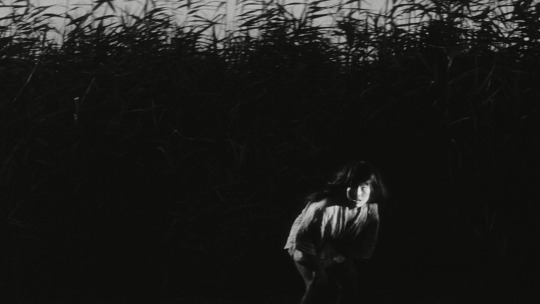


Onibaba, 1964
Kaneto Shindo
#cinema#japanese cinema#art#japanese horror#horror#onibaba#kaneto shindo#nobuko otowa#jitsuko yoshimura#folk tale#movies#film#film shots#cinephile#bnw
172 notes
·
View notes
Photo
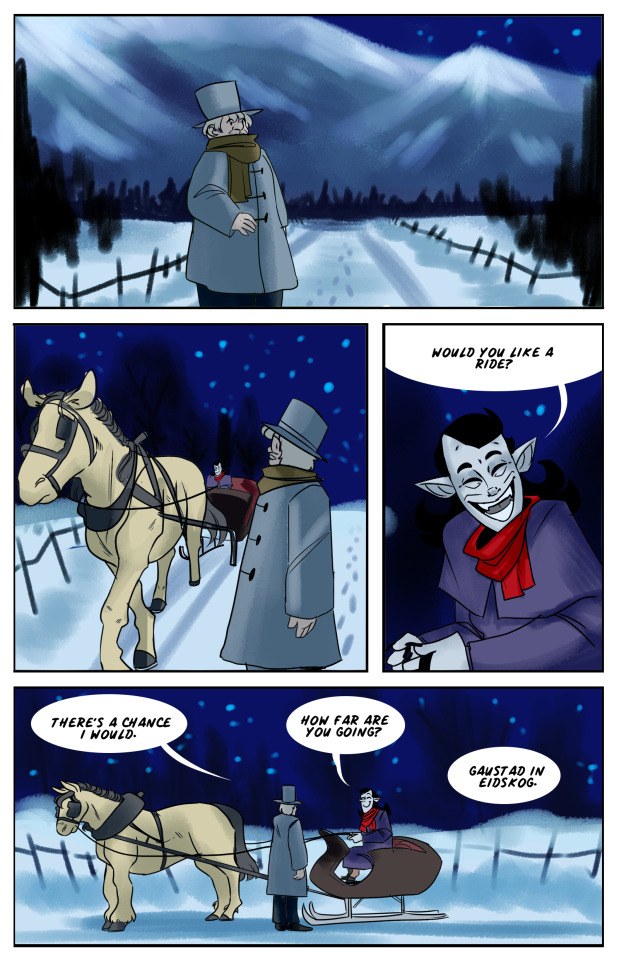

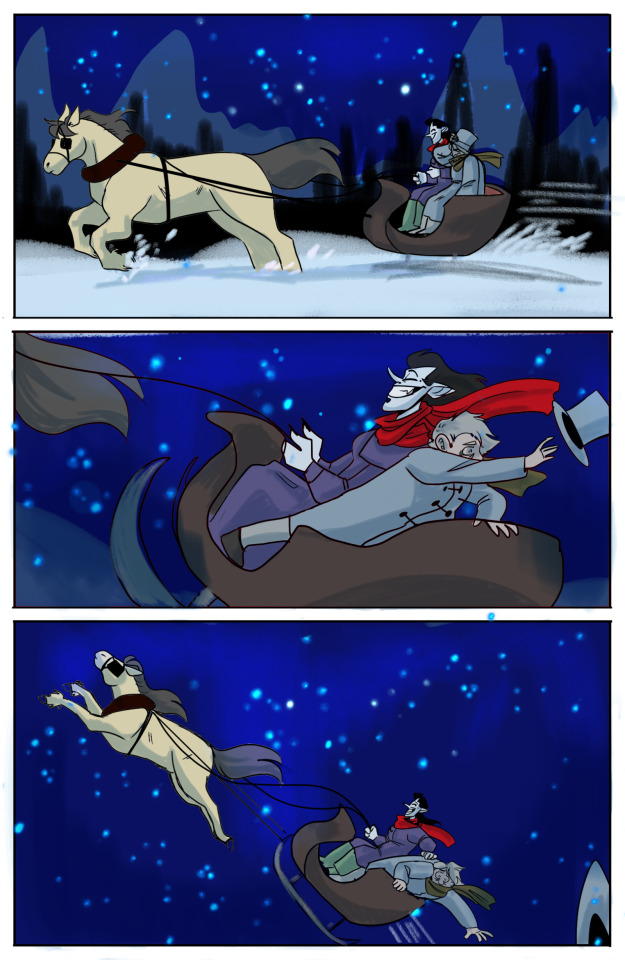




A retelling of a Norwegian folktale in the genre of ‘’The devil gives people rides’’.
At least part 1 of 2. Not sure if I am interested enough in the second half of the story to draw it out since this is the interesting bit.
But there are a lot of subtle cultural things going on in this folktale the narrator expects the audience to know about. So let’s start from the beginning:
In the Viking age, it was legal and perfectly normal to put out children to die if they were unwanted. But after the Christianization, that was illegalized.
The devil was known to help women giving birth outside of wedlock. They also helped those women hide the pregnancies so they wouldn’t face the many serious consequences a woman would have to face if it was known.
If the child was put out to die, she might get the death penalty if it was caught. Or high fines, and\or prison. But it was for many a risk they’d be willing to take.
A woman having children outside of wedlock would be socially ostracized, and have it be considered a moral failing on her part. It was also difficult to take care of children, especially as a lone mother. Among many other practical things.
The devil is a moralizing figure, and anything they are approving of, is bad. So if the devil approve of this heathen practice, then you should be like Tore and do the right thing. You are supposed to notify the people around you to make sure the girl doesn’t do anything she’s not supposed to do if there are any suspicions of a hidden pregnancy.
Not a part of the story, but connected; a lot of beliefs connected to children being put out to die would turn into the Utburd. The Utburd is the spirit of a child crying about never having been baptized and wanting a funeral, or revenge on their mother for having killed them. Adding to the seriousness of the crime.
All of that is hidden in the story, even if it’s barely glanced at in the story itself.
Though, as for me if I’ll be honest, as a modern person in our year of the lord 2023... I’m on team Devil on this. The Devil did nothing wrong. :V
#folklore#scandinavian folklore#folktale retelling#folktale#Fanden Tyken#comic#folk lore#folk tale#pregnancy tw#for one panel i guess
46 notes
·
View notes
Photo

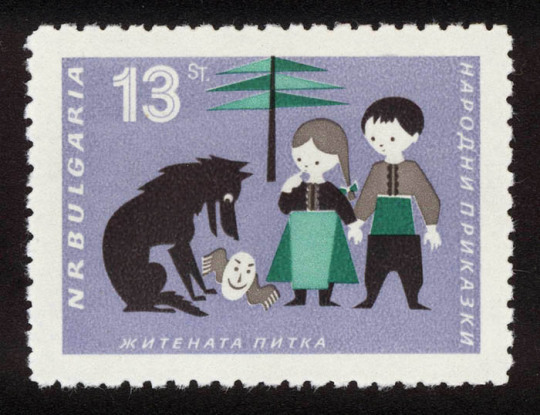




Bulgaria postage stamps by Vladimir Korenev and Stefan Kanchev, 1964
Subscribe to my newsletter for a monthly dose of inspiration :)
#stamp#postage stamp#bulgarian art#Vladimir Korenev#Stefan Kanchev#1960s#60s#vintage#mid century#midcentury#mid-century#mid century modern#mid centruy modern#folk tale#folk tales
221 notes
·
View notes
Text


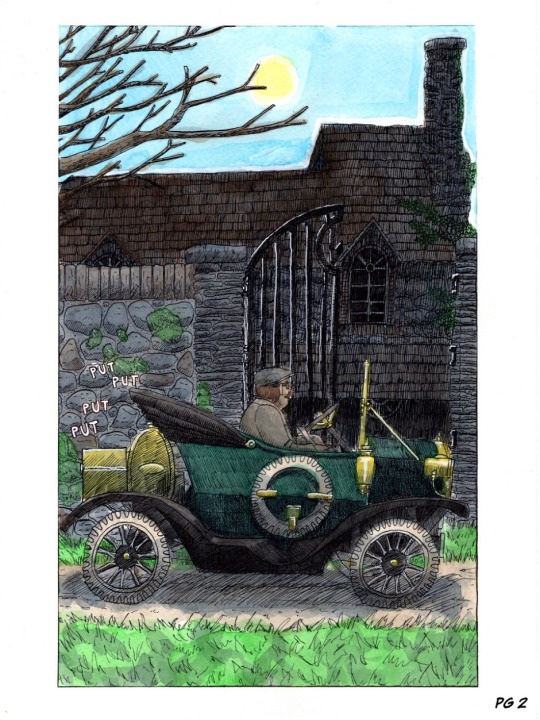


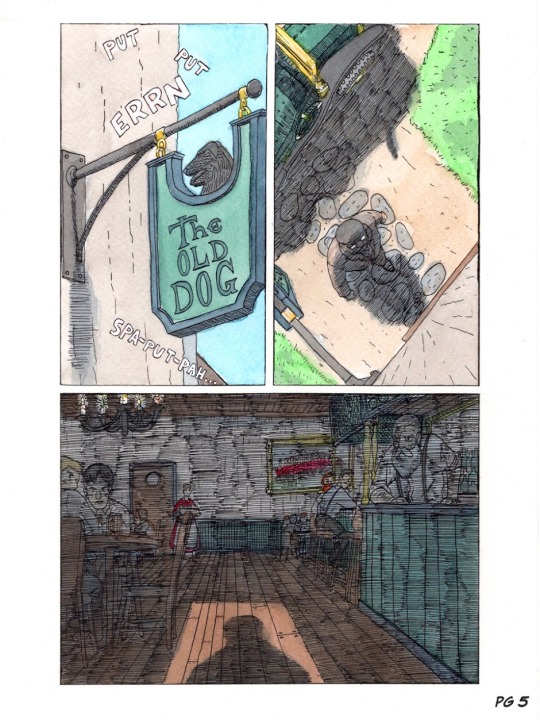


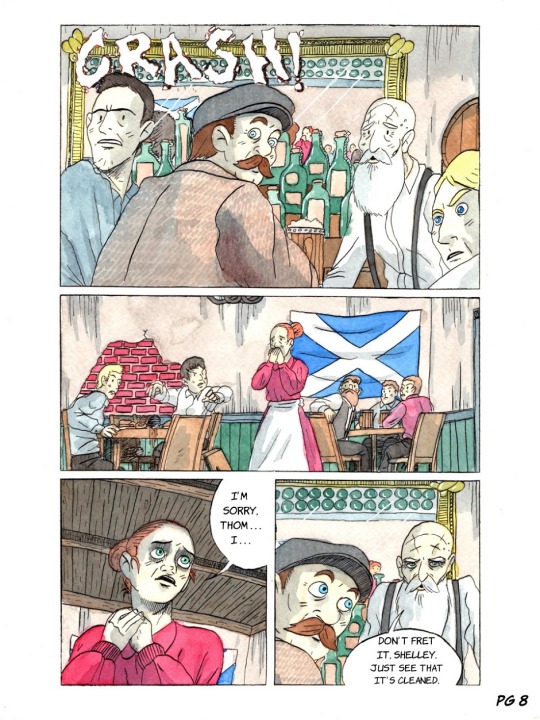
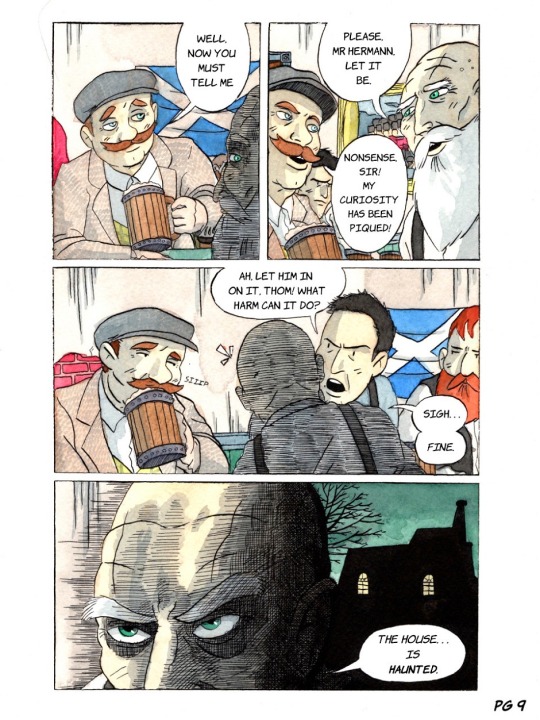

"Me Tie Dough-ty Walker" (pages 1-10)
The first story in "Yarns of Horror", a web-comic series retelling folk tales from around the world. This first tale is 37 pages long and can be found [here]!
#horror#comics#indie comics#art#ink#watercolor#ghost#ghost story#me tie dough-ty walker#scary stories to tell in the dark#traditional art#folk horror#folk tale
36 notes
·
View notes